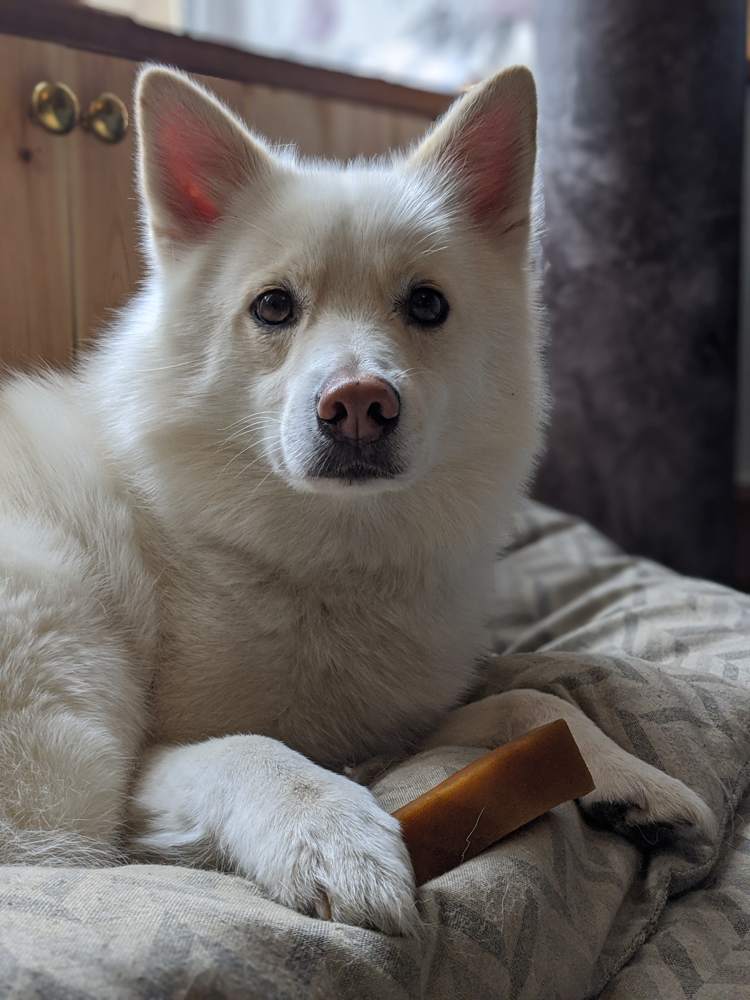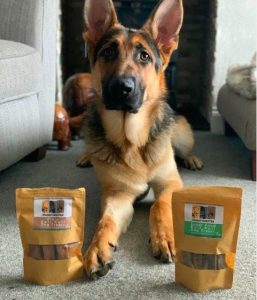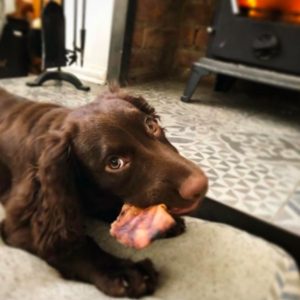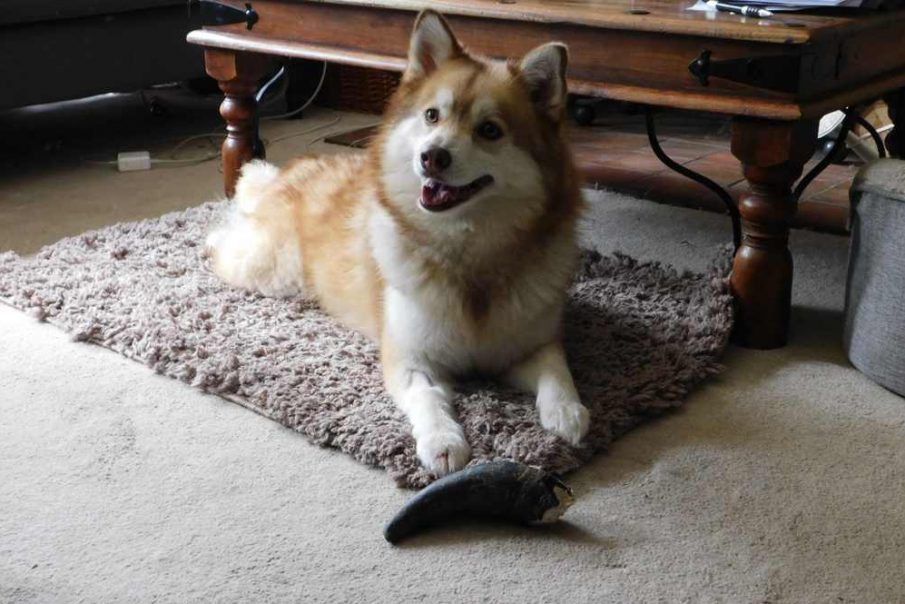At The Dogs we were looking for some pawsome treats that took Apollo more than five mins to eat. We came across Saffron Pawtique, they suggested a Bull horn (he was at it for an hour for 3 days straight) and it got us thinking do dog breeds matter when looking for dog treats? They have given us an extensive answer!
The short answer is no and yes. But that doesn’t really tell us much. For the most part, it is in relation to what type of ‘treat’ you are giving your dog: is it one for training or for them to chew upon?
Why Does Breed Not Matter?
The general consensus for training treats is that bigger dog breeds need more otherwise their reward is not big enough, or they worry that a smaller treat just gets consumed straight away that the dog does not enjoy this as they should reward.
When speaking to a local dog trainer the general training treat size they use are pea sized treats, for all dog sizes – yes even the bigger dogs! The small size is enough to whet their appetite and want more! Whilst also help avoid the potential dangers of becoming lodged in a dog’s throat, the treats are usually fairly soft so they are easily breakable, digestible and enables the training to continue at a decent pace rather than pausing to allow the dog to chew and finish their reward. So the small super tasty treats are much more important and rewarding to a dog than we may think, it’s all about how the dog (whatever their size and breed) perceives the treat and how much of a value they give that treat than what we do. If it seems your dog isn’t receiving the reward in a positive manner, speak to your trainer because what suits one doesn’t suit all: some dogs even prefer toys or praise as dog treats!

Why Does Breed Matter?
It can matter for allergies and the size of chew treats.
Allergies And Dog Breeds
There are many types of allergies that can affect your dog, for the purpose of this blog we will focus on food allergies.
Pure bred dogs are actually more prone to food allergies, the few known breeds prone to food allergies include Pit Bull, Bichon Frise, Boxer, Bull Terrier, Cocker Spaniel, German Shepherd, Golden Retriever, Labrador and Maltese. However science research on this is limited, so the best thing is to keep an eye on your dog.
The most common food allergies tend to be towards soy, eggs, beef, corn, fish, chicken, wheat and dairy.
How do you know they may be suffering from allergies
- Increased scratching
- Constant licking
- Itchy, red skin
- Runny eyes.
- Chewing their feet
- Rubbing their face
- Sneezing
- Diarrhoea
- Vomiting
- Hot spots
- Ear infections
To treat them it’s best to know the cause of the allergy, often the best bet is to talk to your vet to do some testing. If it is a food allergy then you would need to find out what food this is related to and to cut this out from the dog’s food.
Once you find this out, choosing chews/training treats that do not contain this food is super important. Going for a brand, like JR Pets, whose treats only contain a single ingredient can really help.
Read more: Can Dogs Eat Snake Skin?

Size And Breed
The breed of a dog will often determine how big their jaw is. It may also mean that dog breeds more associated with ‘bite drive’ will be stronger with their jaws and possibly need stronger treats.
A smaller dog with a smaller jaw will not want a big chew that they need to stretch their jaw too much for. They will probably happily eat it but you don’t want to make the dog’s jaw stretch too much that it actually is uncomfortable. Quite often you will find that tough chews, like antlers, will come in smaller sizes and larger sizes. It’s great to try and pick a size that fits into your dog’s jaw without too much stretching so they can really chew down on the chew. At the same time, you don’t want the chew to completely fit into a dog’s mouth that they would actually be able to swallow.
Chews are very tough and do not break down easily, this often means they can become lodged in a dogs throat or stuck somewhere in their digestive system. It often feels like you can waste a lot of chew as you need to throw away the smaller pieces. If you opt for a chew like the Yaks, you can actually heat them up when they are too small. This makes them puff up and the dog can then eat the whole thing – no waste!
Great Chews Include
Yaks, Antlers, Olivewood chews, Chew Roots, Bull horns. These tend to be longer lasting options – good for a dog with ‘bite drive’, like a Malinois or German Sheperd. Although these treats come in all different sizes so all dogs tend to get these, some natural chews like Pizzle Sticks and Paddywacks can last dog breeds with a lower ‘bite drive’ a long time too.
So the best answer is getting to know your dog as an individual and what they like and dislike rather than conforming to a ‘breed’.
Why Do Dogs Need Chews?
Chew treats are amazing; they help jaw and teeth health as well as help that dog release their natural behaviour of chewing. Being able to chew can actually help a dog relax due to the release of endorphins, helping to reduce stress, frustration, boredom and anxiety. This means once they start it helps them to be happy and this is why, when stressed dogs may present these types of behaviours, as they want to balance their emotions and feel more relaxed. By stopping them to be able to exhibit these inherited behaviours can actually increase their levels of stress.
Saffron Pawtique’s Extended Team Advice
We are lucky to have brand ambassadors but also great connections with local businesses. Here are some personal thoughts on dog treats and chews for various breeds:

Moose’s owners (German Shepherd): “Moose doesn’t really get chews but for training treats, I prefer something medium sized (mostly so he doesn’t get my fingers). But, as he’s got bigger, I feel like the smaller treats aren’t as rewarding for all the hard work he does when training. They are also easier to store on my person when we are out and about. I’ve not looked into treats based on his breed but since his operation, I’ve been considering treats that include supplements, like turmeric or cod liver oil so his joints benefit from it.”
Bonsai’s owner (Rescue Dog: Irish Terries x German Shepherd Dog x Ridgeback): “We love sprats! They’re a really high value treat for Bon when out walking and in her dinner. She loves her horn – that lasts ages, longer than the antler! She’s a nightmare to find things that actually last!”

Samson’s owner (Sprocker Spaniel): “Samson is obsessed with pigs ears and the venison tendons. To be honest; he will eat anything and everything for a treat but we like to give him the 100% meat ones. He won’t bother with treats he can’t eat in an hour so when we tried antlers and horns he gets bored with them very quickly.”
Lexie’s owner (American Bulldog): “We love stinky sprats. I quite like the small training treats for teaching her stuff. But on the whole, we like more natural, real food things. Lexie and Russian love the horns and it does keep them quiet for a few days. But they will both devour the whole thing. I am yet to find a treat that stays intact around them.

“The yak milk blocks and the venison tendons are another favourite of theirs. But again, doesn’t seem long before there is no trace left.”
Ruby’s owners (Springer Spaniel): “We enjoyed their want really tiny treats for marking good behaviour, I tend to mix them in with her kibble allowance so every now and then she gets something super tasty. Or if I want something that’s going to keep her busy for ages. Yak chews are gone in minutes, as are the bully sticks and pizzles. The only things that last are hooves, horns and antlers. I sometimes spread liver paste or a bit of dog safe peanut butter on them to get her started if she’s lost interest. I do worry a lot about giving her inappropriately sized treats as my dad’s old dog got a treat lodged in her jaw and had to get it removed at the vets. So I take things off her once they start getting small, or only let her chew it if I’ve got hold of the other end.”






